Be your Logistics Department in China
Customized logistics solutions, your logistics expert in China
Customized logistics solutions, Shipping from China to the World
Tel:+8613424475220 Email:info@viputrans.com 
Railway Freight To CIS
Central Asia is a vast region that stretches from the Caspian Sea in the west to Xinjiang, China in the east, Afghanistan in the south, and Russia in the north. After the disintegration of the Soviet Union, Central Asia became the five independent republics of Kazakhstan, Kyrgyzstan, Tajikistan, Turkmenistan, and Uzbekistan. These countries have a combined population of over 74 million people.
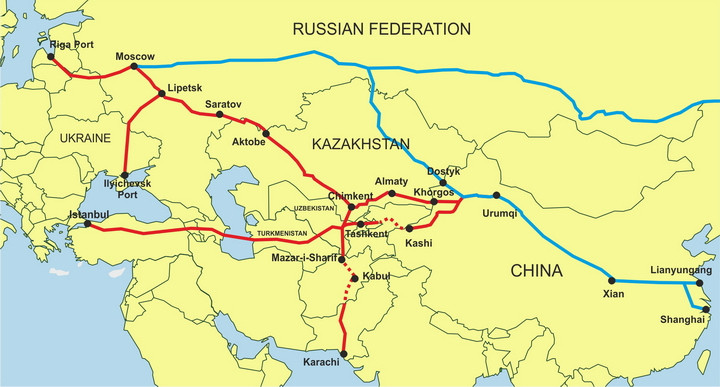
Railway transportation from China to Kyrgyzstan
Kyrgyzstan is a landlocked country located in the northeastern part of Central Asia. It shares borders with Kazakhstan to the north, Uzbekistan to the west, and Tajikistan to the south, and meets China to the southeast and east. With a total land area of 199,000 square kilometers and a population of about 6 million, it is one of the five Central Asian countries. Kyrgyzstan is an important link connecting Eurasia and the Middle East and has historically been a key transit point for neighboring countries' forces traveling east and west, as well as south and north. The main cities in Kyrgyzstan include Chuhe, Taras, Osh, Jalalabad, Naryn, Issyk-Kul, Batken, Bishkek, and Osh.
Kyrgyzstan's railway network spans over 500 kilometers and is divided into two parts, with the rail width adhering to the Russian standard. The railway transportation in the country is still underdeveloped, but it plays a crucial role in the multimodal transport system. It connects to the Kazakhstan railway network in the west and has a southern railway that extends 101.2 kilometers and connects to Xinjiang, China. Kyrgyzstan sees a significant number of trains from the China-Europe Express on the Belt and Road, making it a key player in the "New Silk Road".
China is Kyrgyzstan's second-largest trading partner after Russia, and a significant amount of cargo transportation between the two countries relies on railway transportation. This method is not only the lowest cost, but also the most stable form of international multimodal transportation. In addition to railway transportation, there are also options for international automobile transportation and international air transportation to Kyrgyzstan. Specifically, the railway transportation routes from China to Kyrgyzstan include the route from Guangzhou to Chengdu to Alashankou to Alamejin. Guangzhou serves as a transit warehouse for consolidation, where goods from provinces such as Shenzhen, Dongguan, Foshan, Huizhou, and Shantou are transported and then collectively sent to Chengdu Railway Station. Chengdu, Sichuan is an important starting point for the China-Europe train, providing rail transportation not only to Europe, but also container international rail transportation to the five countries of Central Asia and Russia.
The railway transportation route from China to Kyrgyzstan spans over 7,000 kilometers and typically takes around 20 to 21 days for goods to be transported.
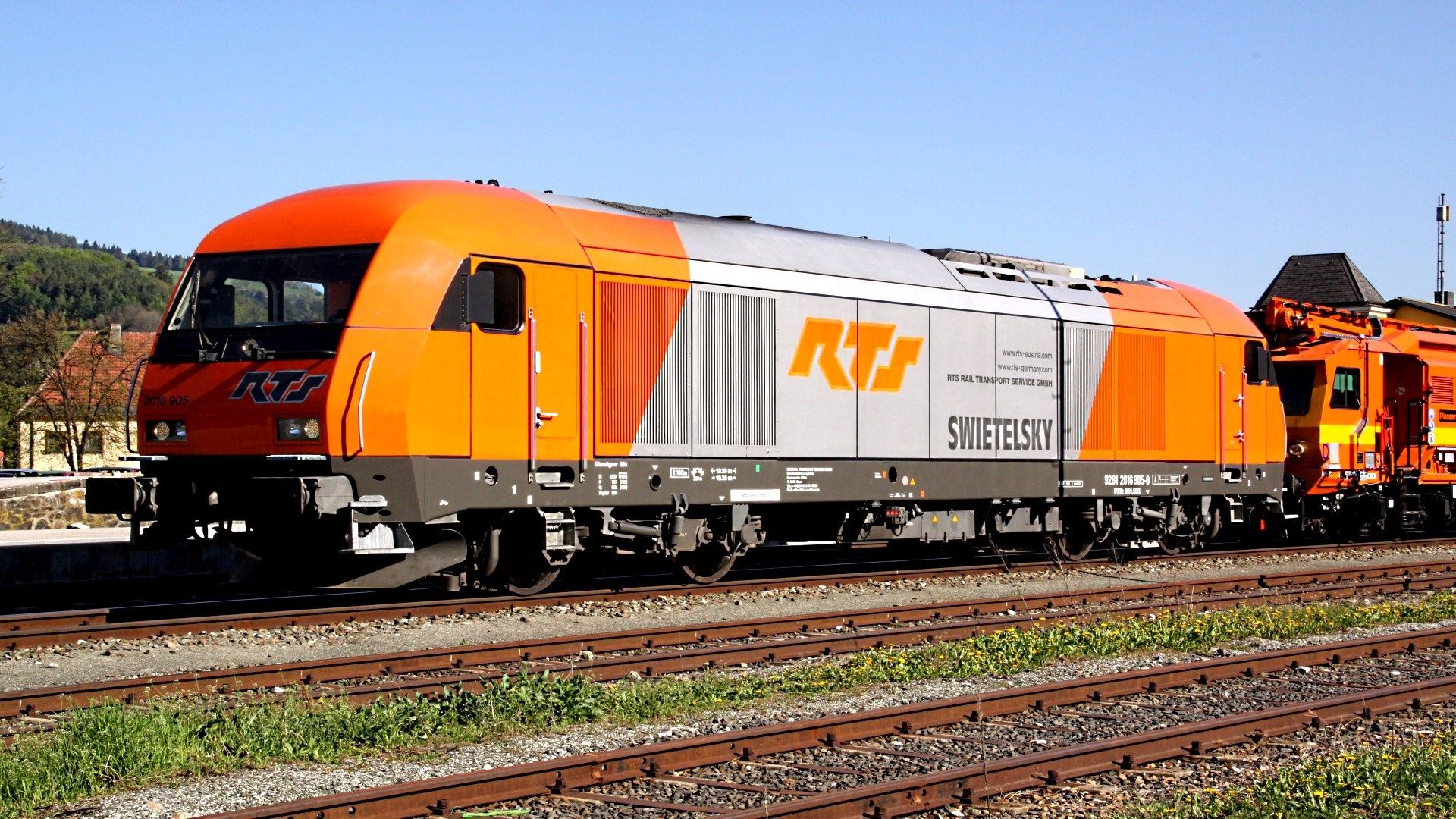
Kazakhstan is surrounded by five Central Asian countries and Russia/Caspian Sea, limiting outside traffic to international railways and automobiles. However, the volume of highway automobile transportation is small, costs are high, and transportation is unstable. Kazakhstan has developed railway lines that connect to China, Moscow, and many European countries, as well as neighboring Turkmenistan, Kyrgyzstan, Uzbekistan, and Tajikistan. It also extends east to Afghanistan and Iran. In terms of land area, Kazakhstan is the fifth largest in Central Asia and China, and its economic share is also far ahead of several countries.
To efficiently transport a large number of goods from China to Kazakhstan, strong logistics support is essential. Before the opening of the "Central Asia trains" China-Kazakhstan container railway transportation, goods were primarily transported through multimodal methods such as international automobile transportation. This involved using Chinese logistics to transport the goods from the far south to Alashankou, Xinjiang for customs declaration and export.
There are numerous unpredictable factors that can impact automobile transportation, including road conditions, weather, driver behavior, and vehicle conditions. Due to these factors, large quantities of automobiles cannot be transported in single batches. However, the opening of the international train container line between China and Kazakhstan has effectively resolved the logistical challenges between the two countries and has significantly boosted the rapid development of their economies.
There are just two railway stations along the route from China to Kazakhstan that can offer international container railway transportation services all the way through. These stations are Xi'an in Shaanxi and Qingdao in Shandong Province. From these stations, container transportation to Kazakhstan is divided into multiple routes and departure trains. In total, there are over 17 railway routes running to Almaty, Astana, Trau, Karaganda, and Zimkent.
The container railway transportation route from China to Kazakhstan can be summarized by its detailed main routes:
-The first route is: (Chengdu, Chongqing, Yiwu, Shenzhen, Guangzhou, Dongguan, Huizhou, Shanghai, Beijing, Xi'an, Wuhan, Changsha, Xiamen) - Alashankou - Atenkoli - Almaty
-The second route is: (Shantou, Heyuan, Suzhou, Tianjin, Guangxi)-Alashankou-Dostyk-Astana
-The third route is: Zhongshan, Foshan, Jiangmen - Horgos - Atenkori - Zimkent
-The fourth route: (Qingdao, Tianjin, Shenyang, Yantai, Laiyang, Weifang, Zibo, Jinan, Dezhou, Linyi)-Almaty, Astana
There are a total of 17 container railway transportation routes from China to Kazakhstan. Some of these routes overlap, with one or two trains being issued per week for each route. The running time for these routes is calculated from the start of the train, including the time for intermediate track changes, and the total railway time to reach the destination port is 15-20 days. Compared with the Belt and Road Central Europe Express, the Central Asia-Kazakhstan railway has a slower running time, with the travel distance from China to Kazakhstan being over 3,000 kilometers. The main reason for this longer travel time is the cost of changing the rail at noon.
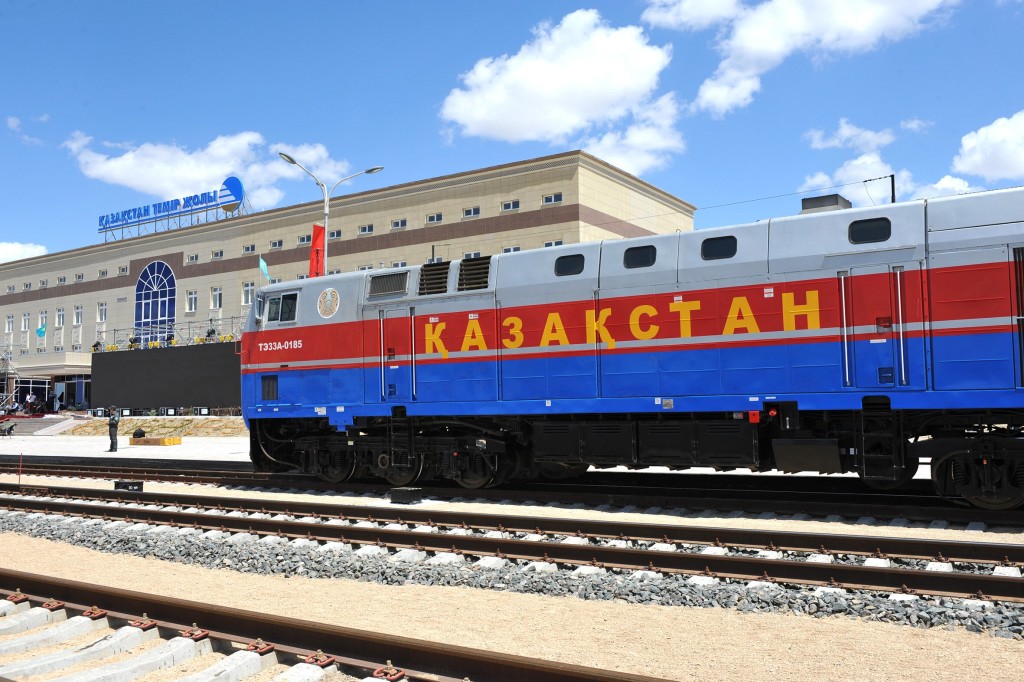
The railway freight transportation from China to Uzbekistan plays a crucial role in promoting economic interoperability and development between the two countries. This international railway freight logistics initiative was established in September 2013, following President Xi Jinping's "Silk Road Economic Belt" initiative. This initiative has opened up opportunities for economic cooperation between China and Uzbekistan. It is essential to invest in logistics infrastructure for economic development, as smooth goods circulation, low logistics costs, and short transportation times are crucial for supporting economic growth. The international multimodal railway route connecting cities in Uzbekistan to various cities in China is the result of collaborative efforts between the governments of both countries.
The China-Uzbekistan railway line begins at the "China-Europe Express" Xi'an Station. Goods can be received simultaneously in multiple locations across China, such as Dongguan, Zhongshan, Qingyuan, Dalian, Beijing, and Zhengzhou. Our international transshipment warehouses in these areas facilitate transport to the departure railway station in Xi'an, from where goods are transported onward to Uzbekistan.
China to Uzbekistan Railway Operation Route: China (Xi'an) - Khorgos - Atenkori - Uzbekistan (Tashkent, Sergey Lichukulsee)
The railway route from China to Uzbekistan spans over 8,000 kilometers and requires more than 15 days for the entire transportation process, including transit through the country, changing rail tracks, and switching railway companies.
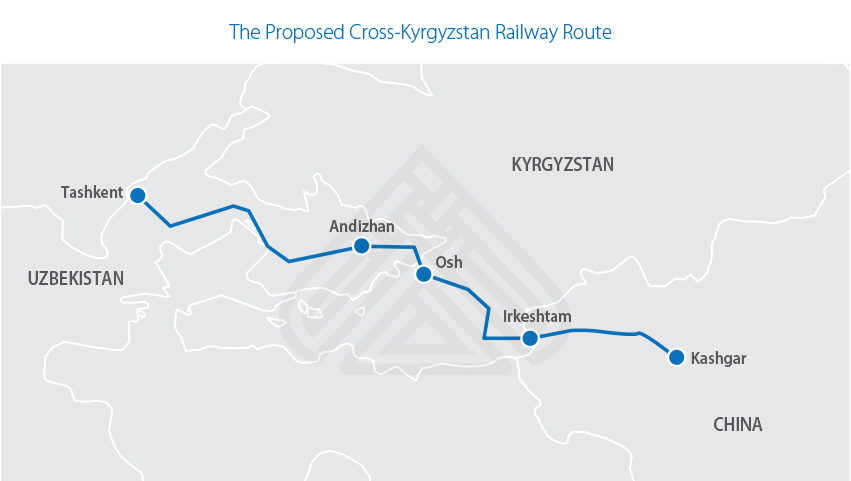
Tajikistan, one of the Central Asian countries, is the country with the smallest land area in China among the Central Asian countries. It is a landlocked country located in the southeast of Central Asia, covering an area of 143,100 square kilometers. It borders Uzbekistan and Kyrgyzstan to the west, China's Xinjiang to the east, and Afghanistan to the south. The terrain is mostly mountainous, with 90% of the land consisting of mountains and plateaus, with about half of them being above 3000 meters above sea level. This has earned Tajikistan the nickname of the "mountain country".
The railway transport routes from China to Tajikistan include major cities in China, with the option for self-prepared box SOC/rental box COC/car skin to be transported to the main station in Tajikistan through Alashankou or Dostyk.
Railway transportation from China to Turkmenistan
Turkmenistan is situated north of Iran and shares borders with Afghanistan to the southeast, Uzbekistan to the northeast, Kazakhstan to the northwest, and the Caspian Sea to the west. It is a landlocked country and covers an area of 491,200 square kilometers, making it the second-largest Central Asian country after Kazakhstan.
The route consists of major cities in China with self-prepared SOC/rental COC, all rail or sea rail, leading to Alashankou/Dostyk and main stations in Turkmenistan.
Rail services from Riga, Klaipeda, Tallinn / Paldiski, St. Petersburg, Poti - to all destinations in Russia, Central Asia and CIS.
Direct agreements with the Railway.
Sea-Rail service from around the globe via Baltic ports to CIS countries.
Arrangement of special equipment (Rail Transporters / Low Beds) in case of OOG and Heavy shipments.
Private park & railway owned platforms, wagons, containers.
Block train services.
Stripping and stuffing of containers/railway wagons.
Transshipment from Bulk vessels into rail wagons.
Complete customs clearance services at transit.
Lashing, fixing, securing services.
Tally and survey services.
Simplextrans offers the following transport services in China:
Maritime Transport with Containers from China:
Transporting the container by trucks to the exporter’s warehouse in China for cargo loading.
Transporting the container by trucks to the exporter's warehouse in China for cargo loading is a common practice in international trade. It allows for efficient and secure transportation of goods from the manufacturer to the exporter's facility. This step is crucial in ensuring that the products are properly packaged and loaded onto the cargo ship for their journey to the destination market. It also helps to streamline the logistics process and minimize potential delays in the export process. Overall, using trucks for this transportation step is a practical and effective method for getting goods ready for international shipment.
Returning the loaded container to the Chinese port.
Once the loaded container is ready to be returned to the Chinese port, it's important to follow the proper procedures for shipping and handling. This typically involves arranging for transportation, ensuring all necessary documentation is in order, and coordinating with the port authorities for the container's arrival. Additionally, it's important to communicate with the relevant parties involved in the shipment to ensure a smooth and efficient return process.
Finalizing export documentation.
Once you have completed the necessary export documentation, be sure to review and double-check everything for accuracy and completeness. This includes the commercial invoice, packing list, certificate of origin, and any other required documents. It's important to ensure that all information is correct and up to date before finalizing the export process. Once everything is in order, you can proceed with submitting the documentation to the appropriate authorities and completing the export transaction.
Loading the container onto the ship.
Loading the container onto the ship is a crucial step in the transportation process. It requires careful coordination and precision to ensure the safety and security of the cargo. Specialized equipment and trained personnel are often used to carefully lift and position the container onto the ship, taking into account weight distribution and stability. This process is an essential part of global trade and logistics, allowing goods to be efficiently transported across the world.
Shipping from China to the offloading port.
When shipping from China to the offloading port, it's important to consider the most efficient and cost-effective shipping method. This typically involves choosing between air freight, sea freight, or a combination of both. It's also essential to ensure that all necessary customs documentation and clearance procedures are in place to avoid any delays or complications. Working with a reliable freight forwarder or shipping company can help ensure a smooth and successful transit from China to the offloading port.
Offloading the container from the ship to the terminal.
Offloading the container from the ship to the terminal is a crucial step in the logistics process. It involves carefully removing the container from the ship and transporting it to the terminal for further handling. This process requires specialized equipment and skilled workers to ensure that the container is safely and efficiently transferred. Once at the terminal, the container can then be sorted, stored, or loaded onto another mode of transportation for its final destination.
Finalizing transit/import documentation at the offloading port.
Finalizing transit/import documentation at the offloading port is a crucial step in the import process. It involves ensuring that all necessary paperwork is in order and submitted to the relevant authorities. This includes customs declarations, bills of lading, and any other required documentation. It is important to carefully review and double-check all documents to avoid any delays or issues with the import process. Once the documentation is finalized, the goods can then be cleared for transit and further distribution.
Delivering the container to the final recipient by lorry or railway.
When delivering the container to the final recipient, it is commonly done using a lorry or railway transportation method. This allows for efficient and reliable delivery of the goods to their destination. Lorry and railway transport are both widely used for transporting containers and can provide cost-effective and timely delivery options for businesses and individuals.
Rail Transports from China:
Rail transportation connects China to the Russian Federation, Kazakhstan, Uzbekistan, Kyrgyzstan, Tajikistan, and Turkmenistan through the border crossings at Alashankou – Dostyk and Altynkol/Horgos (China – Kazakhstan).
The goods are moved in Chinese rail wagons and then transferred to either CIS wagons or private containers for further transport.
Railway transport from China to Russia and CIS countries is facilitated through the border crossings at Zabaikalsk and Zamyn-Ude/Naushki.
The goods are moved in Chinese train cars and then transferred to CIS wagons and private containers for shipment.
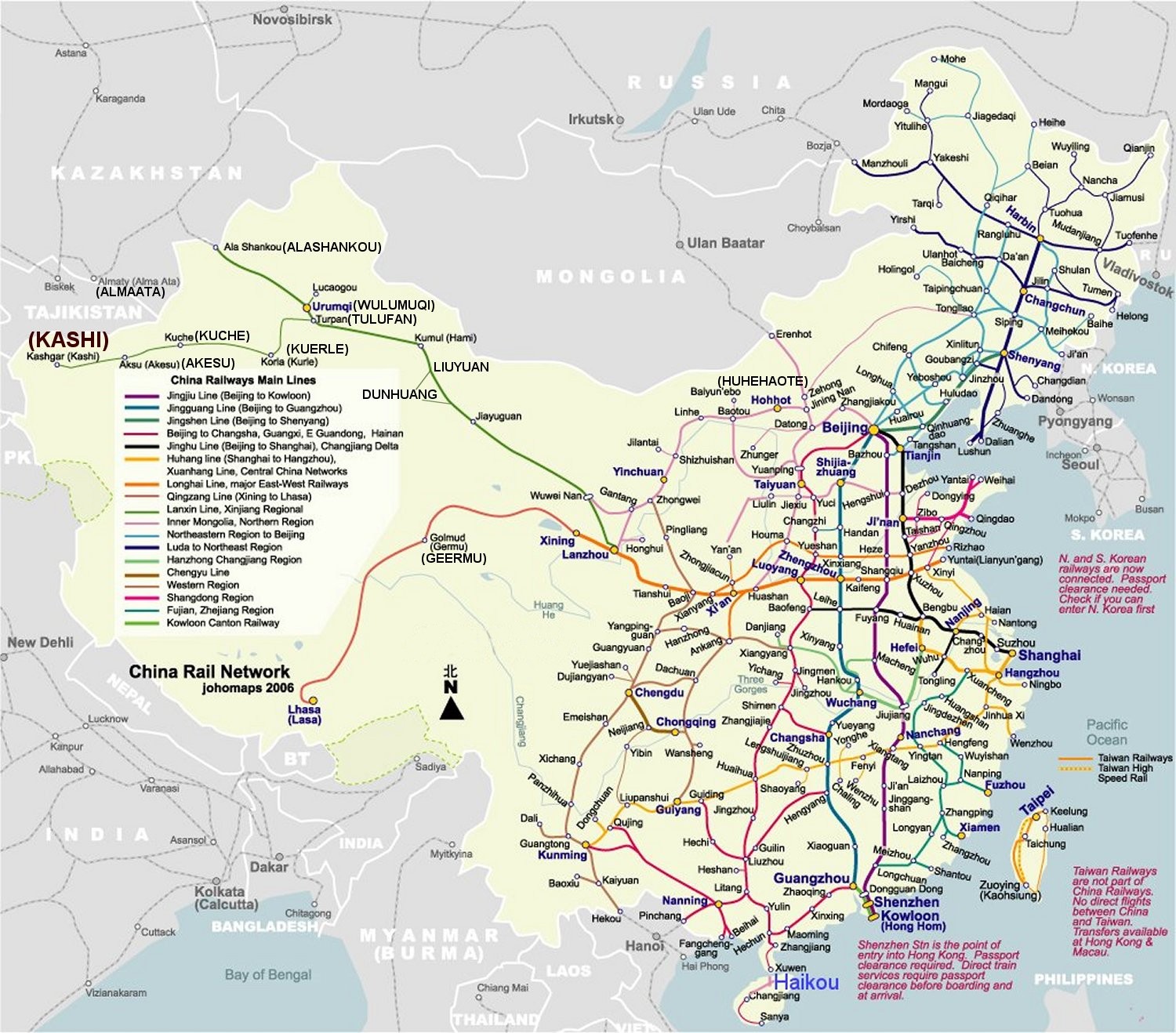
Map of railways network in China
VIPU offers additional transport services for cargo from China by rail:
Ensuring the private container or the truck for loading at the exporter’s warehouse in China
When shipping goods from China, it is important to ensure the private container or truck for loading at the exporter's warehouse. This type of insurance can protect against potential damage or loss during transportation. It is advisable to work with a reputable insurance provider to ensure that your goods are adequately covered. Additionally, be sure to thoroughly review the insurance policy to understand the extent of coverage and any limitations. Taking these precautions can provide peace of mind and financial protection throughout the shipping process.
Transporting the cargo or the private container by truck from the transporter’s warehouse to the rail terminal in China.
When transporting cargo or private containers by truck from a transporter's warehouse to a rail terminal in China, it is important to ensure that all necessary permits and documentation are in order. Additionally, it is crucial to have a reliable and experienced trucking company to handle the transportation of the cargo to the rail terminal. It is also important to consider factors such as the distance, road conditions, and any potential customs or border clearance requirements. Planning and coordination with all parties involved is key to a successful and efficient transportation process.
Loading of the container onto the platform or transshipment of the cargo from a lorry in a covered / open top railway car or a platform.
The loading of the container onto the platform or the transshipment of the cargo from a lorry into a covered or open top railway car or platform is a crucial step in the transportation process. This process ensures that the cargo is securely transferred from one mode of transportation to another, allowing for efficient and safe delivery to its final destination. It requires careful coordination and adherence to safety protocols to ensure the smooth transfer of the goods.
Payment of the additional taxes at the rail terminal
The payment of additional taxes at the rail terminal is required for certain goods and services that are being transported. These taxes are typically collected by the terminal operator or the government agency responsible for regulating rail transport. It's important to ensure that all taxes are paid in full to avoid any delays or penalties. If you have any questions about the specific taxes that apply to your shipment, it's best to consult with the terminal operator or a tax professional for clarification.
Filling in the transport documentation and the declaration of export.
When filling in the transport documentation and the declaration of export, it's important to provide accurate and detailed information about the goods being shipped. This includes the quantity, value, and description of the items, as well as the intended destination and any applicable tariffs or duties. It's also crucial to ensure that all required documentation is completed and submitted correctly to avoid any delays or issues during the export process. Additionally, it's important to stay updated on any changes to export regulations and requirements to ensure compliance with all applicable laws and regulations.
If you have any needs for logistics and transportation, welcome to consult
E-MAIL:sales02@viputrans.com
VIPU SUPPLY CHAIN LOGISTICS CO.,LTD
WECHAT/WHATSAPP/SKYPE:+86 13424468029
LORA YANG
Copyright © 2003-2025 VIPU Supply Chain Logistics Co., Ltd. | All Rights Reserved
LOGISTICS | E-COMMERCIAL FULFILLMENT | ABOUT US | CASE | NEWS | VIDEO | CONTACT US
We will find the fastest or the cheapest way for your shipment. Please specify: where from, where to, what to ship.